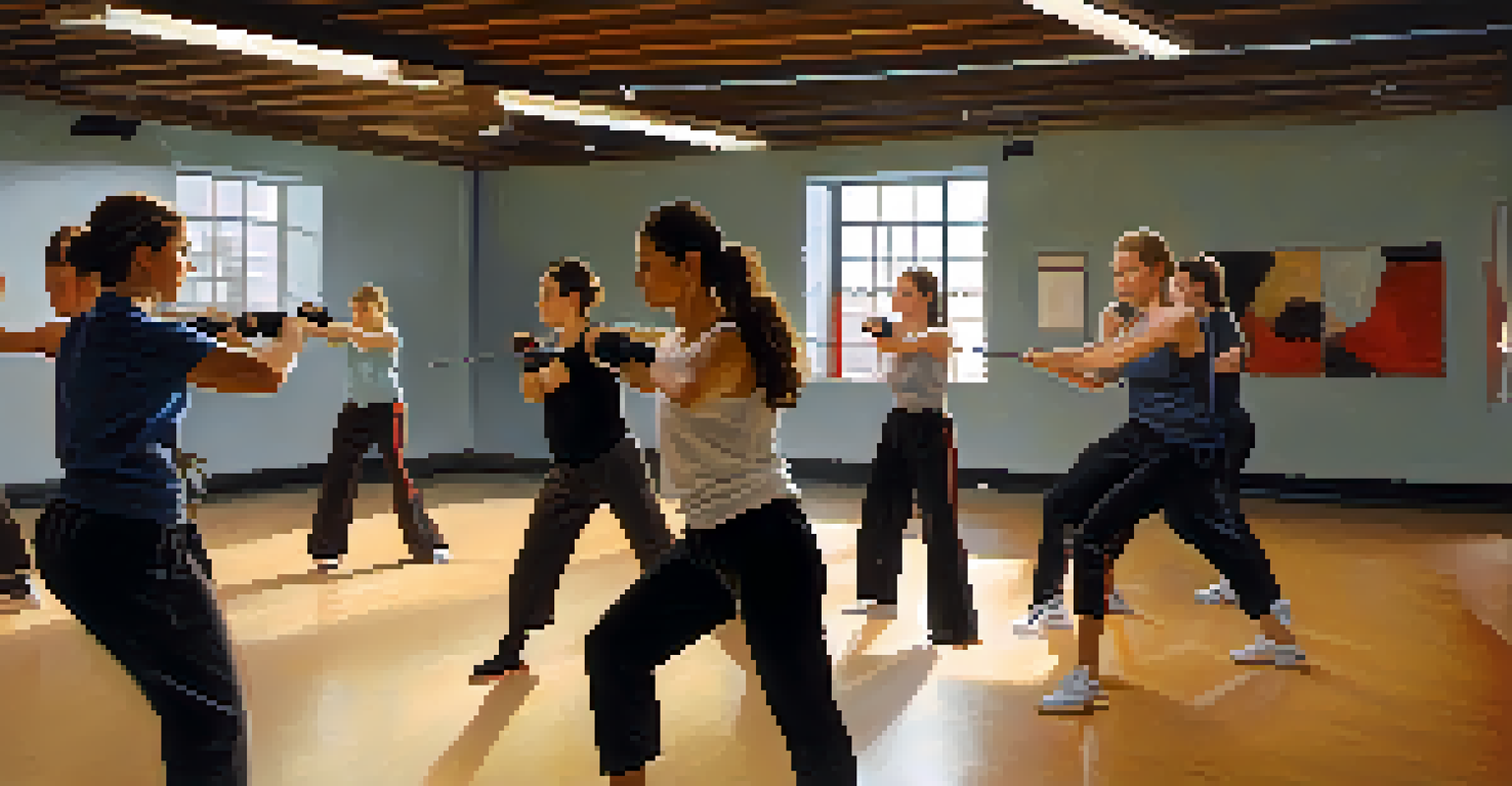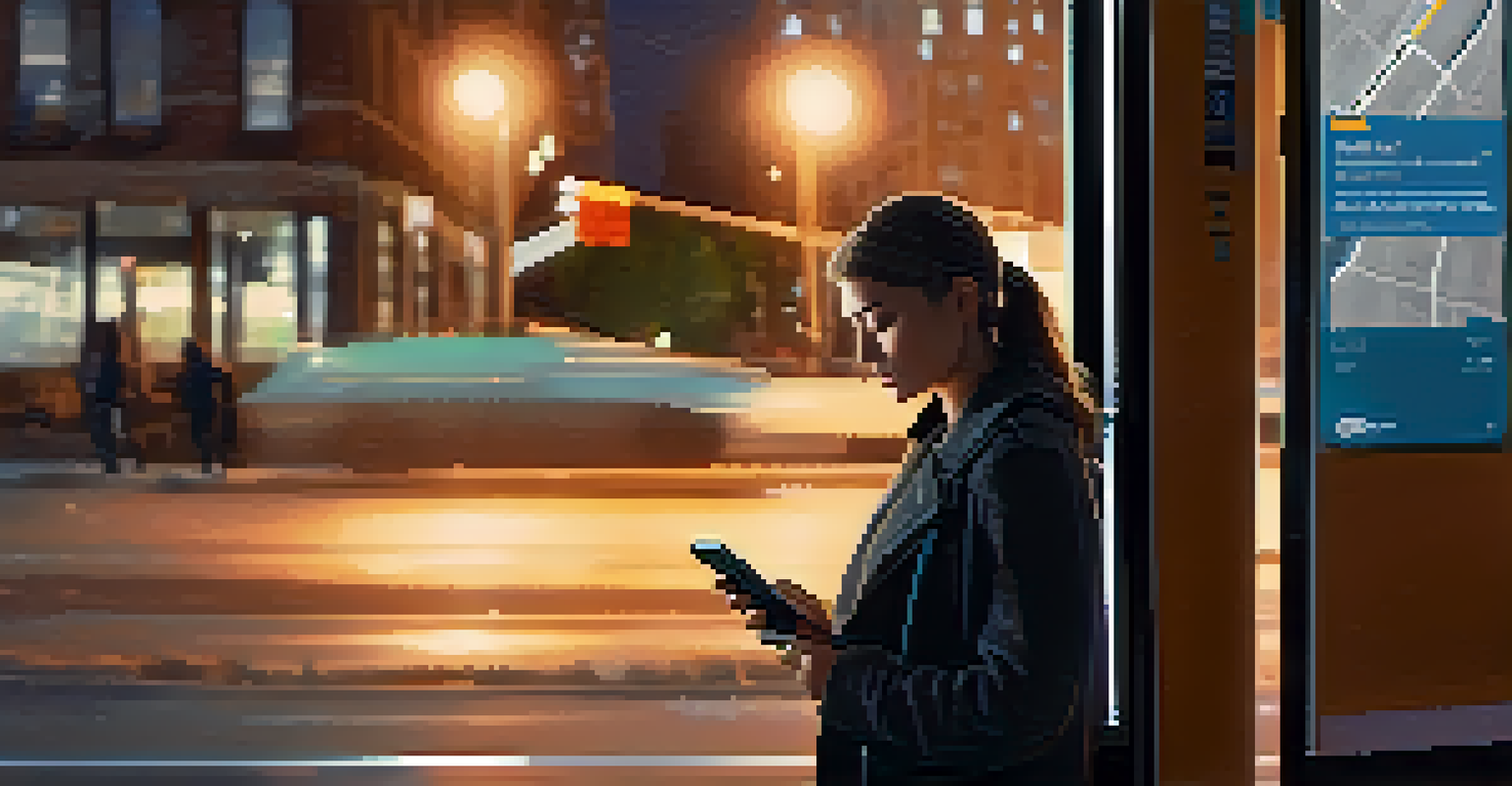Effective Self Defense Strategies for Women in Urban Areas

Understanding the Urban Environment for Safety
Living in an urban area presents unique challenges and opportunities for women regarding safety. The bustling streets, crowded public transport, and vibrant nightlife can sometimes feel overwhelming. However, being aware of your surroundings and understanding potential risks is the first step in staying safe. Just as a sailor learns to read the tides, women can benefit from being attuned to their environment.
The best protection any woman can have is courage.
Urban environments can include dark alleyways, poorly lit parks, and busy streets that may not always feel safe. Awareness of these hotspots can help you navigate your surroundings more confidently. Visualizing your route and anticipating potential hazards can make a significant difference. It’s like being a chess player, thinking a few moves ahead to stay one step ahead of potential threats.
Remember, safety isn’t just about avoiding danger; it’s also about empowering yourself to react appropriately. By becoming familiar with your city, you can create a mental map that highlights both safe and unsafe areas. This preparation can make a world of difference in how you perceive and tackle urban challenges.
Developing Situational Awareness Skills
Situational awareness is a crucial skill for anyone but especially for women in urban areas. This means being conscious of your surroundings and noticing anything unusual or out of place. It’s like being a detective in your own life, always on the lookout for clues that might signal a need to be cautious. By honing this skill, you can respond more effectively to potential threats.

Think of it as tuning into a radio frequency; the more you practice, the clearer the signal becomes. Start by observing people and their behaviors in public spaces. Are they acting normally, or do they seem suspicious? Engaging with your environment can enhance your instinctive reactions, making you more aware of your surroundings, much like a cat that’s always alert for movement.
Stay Aware of Your Surroundings
Developing situational awareness helps you identify potential threats and navigate urban spaces confidently.
The goal is to create a natural habit of scanning your environment without becoming overly paranoid. This balance ensures that you remain aware while still enjoying your urban experience. When you cultivate this awareness, you can often detect potential dangers before they escalate, allowing you to take proactive measures.
Establishing a Personal Safety Plan
Having a personal safety plan is like preparing for a rainy day; it may not happen often, but when it does, you'll be glad you did. This plan should include various scenarios, such as how to respond if you feel threatened or if you lose your way. By visualizing these situations and planning your responses, you can react more calmly and effectively in real-life situations.
Trust your instincts. Intuition doesn’t come from somewhere; it comes from within.
Your safety plan can involve choosing safe routes, setting up check-in points with friends, or even having an emergency contact list handy. It's important to think about the tools at your disposal, like a charged phone or personal safety apps. Having these resources ready can be a game changer, much like having an umbrella at the ready when the clouds gather.
Moreover, practicing your responses can help reinforce your safety plan. Regularly revisiting these strategies can make you feel more confident and prepared. Just as athletes train for competitions, you can train your mind and body to act effectively when needed.
Learning Basic Self-Defense Techniques
Learning self-defense techniques is an empowering way to increase your confidence and security. You don’t need to become a martial arts expert; even basic moves can be incredibly effective. Think of it as having a toolkit filled with essential tools to tackle various situations. Knowing a few key techniques can make all the difference when it comes to protecting yourself.
Consider enrolling in a self-defense class specifically designed for women. These classes often focus on practical techniques that can be applied in real-life scenarios, such as escaping from holds or using your body weight to your advantage. It’s similar to learning how to ride a bike; once you grasp the basics, you gain the freedom to navigate your surroundings with confidence.
Create a Personal Safety Plan
Having a safety plan prepares you for various scenarios, empowering you to respond calmly in emergencies.
Additionally, practicing these techniques regularly can help you internalize them. Just like any skill, the more you practice, the more instinctive your reactions will be. This preparation can create a sense of empowerment, transforming fear into strength.
Utilizing Technology for Personal Safety
In this digital age, technology can play a vital role in enhancing personal safety. There are numerous apps available that allow you to share your location with trusted friends or alert them in an emergency. Think of it as having a virtual safety net; you can feel more secure knowing that help is just a tap away. Embracing these tools can provide an added layer of security in urban settings.
Some apps even offer features such as emergency alerts, which can notify authorities if you're in a dangerous situation. It's akin to having a silent alarm at your fingertips, ready to be activated when needed. Additionally, GPS tracking can help you navigate unfamiliar areas without the fear of getting lost.
However, while technology is a fantastic ally, it's essential to remain vigilant and not rely solely on it. Balance your use of technology with traditional awareness techniques. This combination can create a comprehensive approach to your safety, much like a well-rounded diet contributes to overall health.
Building a Support Network for Safety
Building a support network is key to enhancing your safety and confidence. This network can include friends, family, neighbors, or local women’s groups who share similar concerns. Think of it as forming a safety circle; the more people who are aware of each other’s routines and concerns, the stronger the support system becomes. Having someone looking out for you can be incredibly reassuring.
Regularly communicating with your support network about your safety strategies can help everyone stay informed. You can share tips, resources, and updates on any local safety concerns. This exchange of information creates a community of vigilance, much like a neighborhood watch program, where everyone looks out for one another.
Trust Your Instincts
Listening to your gut feelings can guide you to safety and help you react appropriately in uncertain situations.
Moreover, organizing group outings or shared transportation can add an extra layer of safety. There’s strength in numbers, and having companions can deter potential threats. By fostering these connections, you create not just a safety net, but also a sense of belonging and empowerment.
Trusting Your Instincts in Unsafe Situations
Trusting your instincts is perhaps one of the most powerful tools in your self-defense arsenal. Often, your gut feeling can sense danger before your mind processes it. It’s like having an internal alarm system that alerts you to potential threats. When you feel uneasy about a situation or person, don’t hesitate to act on that feeling, as it could be your subconscious trying to protect you.
Learning to recognize these instincts requires practice and self-reflection. Take note of past experiences where your instincts guided you correctly; this can help you build confidence in your intuition. Just as a seasoned actor relies on their instincts during a performance, you can rely on yours in real-life situations.

Empowering yourself to act on your instincts can come in many forms, such as leaving a situation that feels off or seeking help. Remember, it’s always better to err on the side of caution. Embracing this mindset can significantly enhance your sense of safety and control in urban environments.